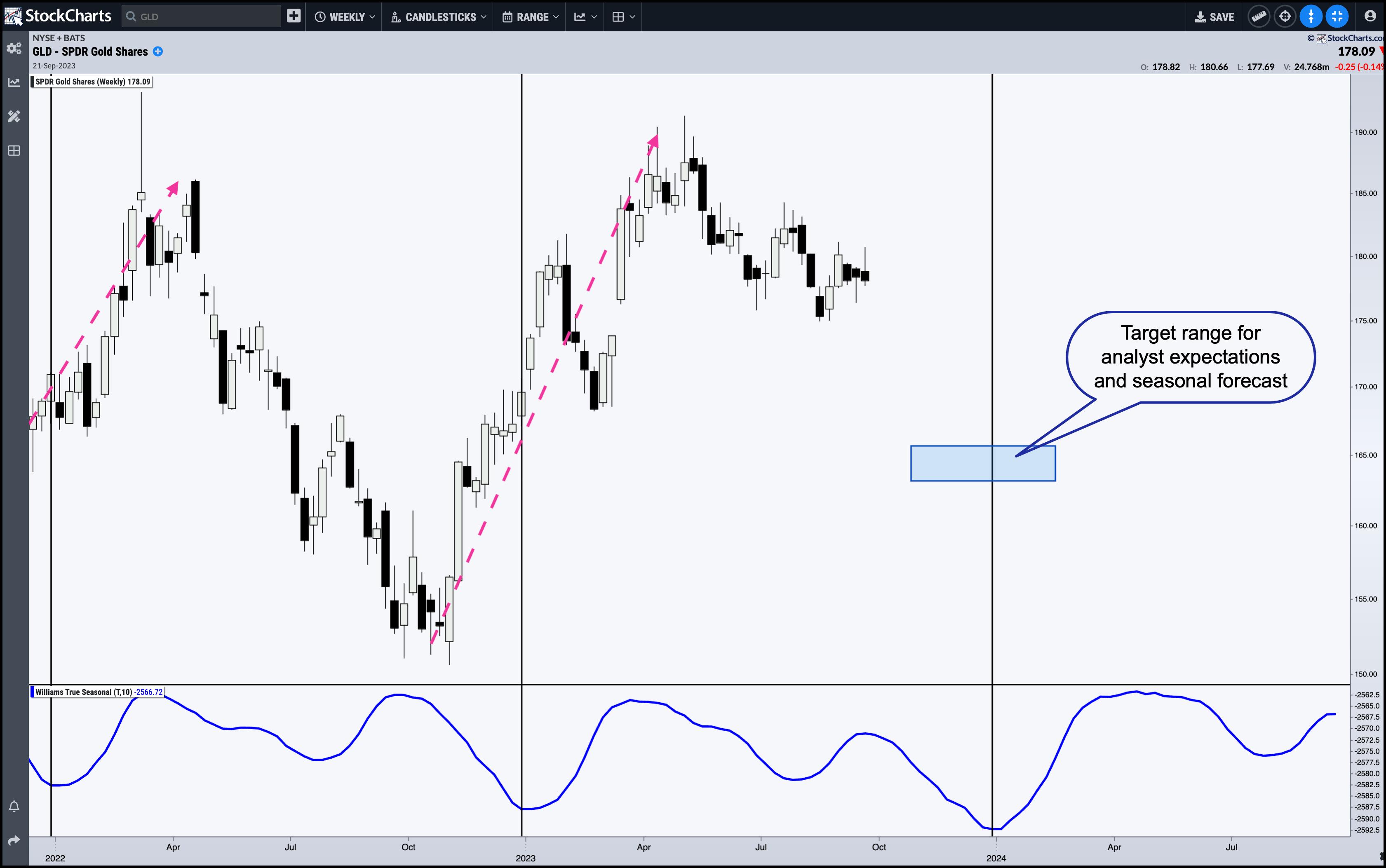TAKEAWAYS
- A convergence of fundamental and seasonality data predicts a potential decline in gold prices by the end of the year
- Demand for gold has decreased by about 5% year-over-year in the first half of 2023, with central banks being the primary buyers
- The Williams True Seasonal indicator aligns with gold's fundamental projections, suggesting that there might be a favorable buying opportunity within the next three months

Gold has been hovering in a range over the last three months. It's as if the yellow metal was waiting for something major to knee-jerk its trajectory.
Maybe you're bullish on gold for reasons straying beyond mainstream economic or geopolitical uncertainties. Maybe you just want to pick up some exposure to balance out the monetary tilt in your portfolio. Or, perhaps, you're looking for a good swing trade. But where might you go to find a compelling setup? This is where seasonality, coupled with an analysis of supply and demand, can be useful.
So what's new in the gold market?
Fundamentals Point Downward
According to the World Gold Council, global demand for the yellow metal fell by about 5% year-over-year in the first half of 2023. While investor demand via ETFs was the biggest factor in this decline, demand from tech production, jewelry manufacturing, and the physical coin and bullion market also played a major part. The only buyers left to buoy the price of gold, however, are central banks.
Capital Economics, a forecasting and consultancy firm, predicts that spot gold will fall to $1,800 per ounce by the end of the year. This is a 7% decrease from current prices and would be the lowest level of the year.
Seasonals Also Point Downward, But Toward a Buying Range
If you're familiar with the Williams True Seasonal indicator, you know its characteristics and how it differentiates itself from other seasonality approaches. Let's apply this to the gold proxy, the SPDR Gold Trust ETF (GLD).

CHART 1: WEEKLY CHART OF GLD AND WILLIAMS TRUE SEASONAL WITH 10-YEAR LOOK BACK. The seasonal forecasts were correct, but the timing, as with most seasonality forecasts, requires flexibility.Chart source: StockChartsACP. For educational purposes.
Starting from the left side of the chart, the vertical lines mark the major troughs of GLD's seasonal cycles. Now, take note of the pink arrows, particularly when and where they start and end. The seasonal forecasts were accurate, but traders must be flexible with the timing, as seasonal trends don't always materialize in certain years.
GLD is currently trading at $177.90. Based on the analyst forecast of a 7% dip by the end of the year, the target range would center around $165, represented by the blue-shaded rectangle. That's the fundamental outlook based on the World Gold Council's data on dwindling gold consumption. On the technical side, this price forecast happens to converge with seasonal expectations, according to the Williams True Seasonal indicator.
So now you have a general price and time range target to which you can look forward to a buy signal. If seasonal expectations materialize this year, your buy point may present itself within the next three months.
The Bottom Line
The price of the yellow metal has been stable recently, but it's likely to decrease due to lower demand worldwide, with mainly central banks still interested in buying it. Some experts predict a steep 7% fall by the end of the year. However, seasonal patterns are also expecting a fall this fall, and this aligns with fundamental projections. This convergence of fundamental and seasonal data can be advantageous if you want to go long. There are no guarantees, of course, but the opportunity might present itself in the next three months. So keep an eye out for that potential buy signal.

Disclaimer: This blog is for educational purposes only and should not be construed as financial advice. The ideas and strategies should never be used without first assessing your own personal and financial situation or without consulting a financial professional.
